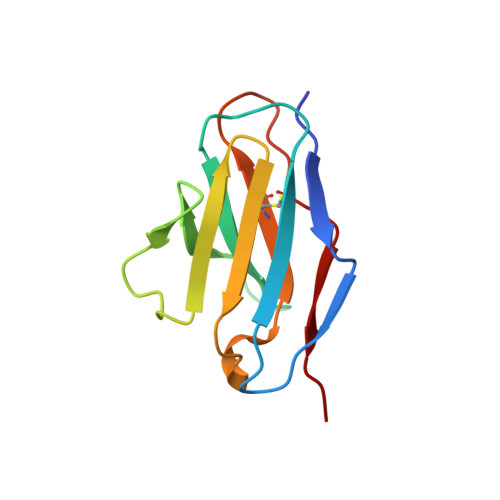A single mutation promotes amyloidogenicity through a highly promiscuous dimer interface.
Peterson, F.C., Baden, E.M., Owen, B.A., Volkman, B.F., Ramirez-Alvarado, M.(2010) Structure 18: 563-570
- PubMed: 20462490
- DOI: https://doi.org/10.1016/j.str.2010.02.012
- Primary Citation of Related Structures:
2KQM, 2KQN - PubMed Abstract:
Light chain amyloidosis is a devastating protein misfolding disease characterized by the accumulation of amyloid fibrils that causes tissue damage and organ failure. These fibrils are composed of monoclonal light chain protein secreted from an abnormal proliferation of bone marrow plasma cells. We previously reported that amyloidogenic light chain protein AL-09 adopts an altered dimer while its germline protein (kappaI O18/O8) forms a canonical dimer observed in other light chain crystal structures. In solution, conformational heterogeneity obscures all NMR signals at the AL-09 and kappaI O18/O8 dimer interfaces, so we solved the nuclear magnetic resonance structure of two related mutants. AL-09 H87Y adopts the normal dimer interface, but the kappaI Y87H solution structure presents an altered interface rotated 180 degrees relative to the canonical dimer interface and 90 degrees from the AL-09 arrangement. Our results suggest that promiscuity in the light chain dimer interface may promote new intermolecular contacts that may contribute to amyloid fibril structure.
Organizational Affiliation:
Department of Biochemistry, Medical College of Wisconsin, Milwaukee, WI 53226, USA.














